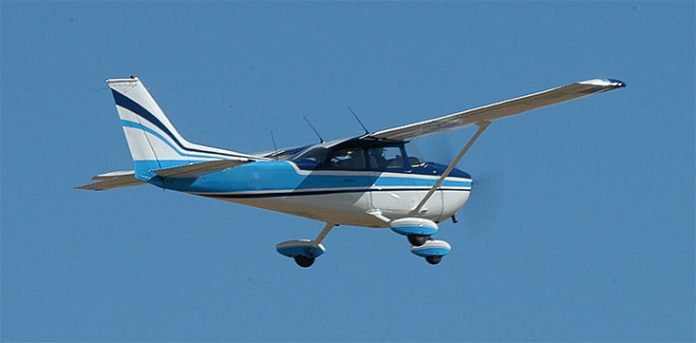The Australian Transport Safety Bureau (ATSB) is reminding pilots of the importance of thorough pre-flight planning to avoid the possibility of flying into bad weather after an accident in near Ballina, NSW in 2017.
On 16 June, a Cessna 172 was flying on a private flight from Southport, Queensland to a maintenance facility at Ballina, NSW when it entered an area of cloud, fog and drizzle. The aircraft diverted off the initial track and disappeared into cloud heading inland. A short time later the aircraft collided with terrain and the pilot was killed.
The ATSB found the pilot had probably become spatially disoriented, resulting in loss of control and a collision with terrain. The pilot, ‘was reported to be diligent with checking weather conditions on a regular basis,’ the ATSB said, but had not checked his Airservices Australia National Aeronautical Information Processing System (NAIPS) account since the previous afternoon and had reported trouble logging into NAIPS on the morning of the crash. The investigation was unable to determine if the pilot had obtained en-route weather information from other sources.
The ATSB also found that the pilot was under some degree of self-imposed pressure to continue with the flight, despite the inclement weather conditions, after having rescheduled his maintenance booking twice and with the aircraft’s maintenance release due to expire. (He could, however, have flown the aircraft after expiry by applying for a special flight permit.)
‘Weather-related accidents remain one of the most significant causes of fatal accidents in general aviation,’ the ATSB reported.
ATSB Executive Director Transport Safety Nat Nagy said, ‘The ATSB’s safety messages from this investigation are clear: visual flight rules pilots should conduct thorough pre-flight planning to avoid the possibility of flying into bad weather. They should also make alternate plans in case weather deteriorates, and make timely decisions about diverting or turning back.
‘If visual flight rules pilots do find themselves in deteriorating weather and become disoriented or lost, they should seek whatever help is available including contacting air traffic control. This simple action has averted potential disaster in many instances.’
Inflight decision-making is one of the ATSB’s SafetyWatch priorities, particularly regarding pilots flying with reduced visual reference. One of the key messages of SafetyWatch is on the use of ‘personal minimums’ checklists. VFR pilots should use a checklist to help control and manage flight risks by identifying risk factors that include marginal weather conditions and only fly in environments that do not exceed their capabilities.






So sad and so unesesary, it’s too easy to get a plane ticket, it should be a LOT harder to weed out the Cowboys and those that simply are unsuitable to command a machine that requires discipline!
Not so sure about being too easy to obtain an aeroplane licence. No other profession is checked as often as pilots. When did your GP last have a reexamination ..? .
agree with you Jack – how about applying aviation standards of retesting to vehicle drivers?
Well if the pilot felt under pressure to get his aeroplane to maintenance before the MR expired and died for his lack of awareness of a Special Flight Permit, or his reluctance to wait a day for better weather but shell out $600 for a SFP, then maybe somethings can be done to reduce the likelihood of a reoccurrence .
1. Education as to the existence and purpose of a SFP. Noting that there are a number of categories of SFP, some dealing with first flight of an aircraft, some dealing with significant modification of aircraft. It looks like over kill to lump an insignificantly lapsed MR in with those other circumstances.
2. Create a separate version of the SFP specifically for a lapsed MR. It could be available to use for up to 28 days after an MR has expired and be submitted as a NOTIFICATION OF FERRY FOR MAINTENANCE. The owner or operator or pilot making the ferry flight would be responsible for making the Notification. It would be a simple process. The aeroplane would be subject to a daily inspection, signed for by a suitably rated pilot. No passengers permitted on the ferry flght for maintenance. No responsibility to a Licenced Engineer. Beyond 28 days , probably a more onerous process similar to the currently applicable SFP. The NOTIFICATION OF FERRY FOR MAINTENANCE could be fee free to take the economic pressure off the decision to get the aircraft to maintenance regardless of adverse conditions.
There are many reasons why an aircraft could be overdue for a Periodic Inspection, none of them to do with the airworthiness of the aircraft itself.
An insignificantly lapsed MR, while to be avoided, should not by prospect, precipitate death of a pilot.